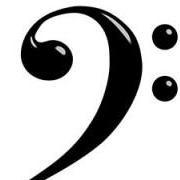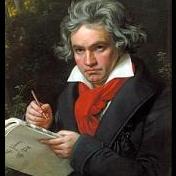Search the Community
Showing results for tags 'piano', 'sonata', 'solo' or 'alevel'.
-
I was busy working on a project for Euphonium when I got the ideas for this piece. Over the last few days, a week really, I've added and changed stuff. The work slowly expanded from there. When I got the idea, I thought about doing a sonata based on it -but, as my composition advanced, I decided a one movement work would suffice. The form is pretty straightforward -so I won't bore you with the details. I can, however, say I'm happy with this draft of it. The language is very intimate and, I'm sure some would note, there's a sense of doom and resignation in the piece (largely due to my stressing over the coronavirus and it's potential impact on my family). But, in the end, the show must go on -and life itself will ultimately return to some sense of normalcy. At any rate, I hope you all enjoy this.
-
My Piano Sonata No.1 in F Minor composed in 2018. The sonata has 3 movements and is written in a romantic style. The first movement is in rondo form. The second consists of a prelude and a short fugue, and the final movement is more free in its form. The sonata is inspired by some of the works of Chopin and Beethoven. I'd be interested in any feedback. Sorry about the awful recording quality.
-
Im trying to write a full IV movement piano sonata, I have finished the 1st movement, but I'm having trouble with the following movements. My plan is this: I. Moderato-Allegro Sonata form II. Adagio, Rondo form or theme and variations (I'm not pretty sure about the B part) III. Allegreto Scherzo IV Presto or Allegro vivace Rondo sonata form I have composed a little of the second movement, Does it fit the first movement well? Also I have composed the first theme of the IV movement, I wanted to "recapitulate" some of the ideas, so I used same harmony as the first movement, but it doesn't convince me so much. Any feedback is apreciated :3.
-
A prelude I have composed yesterday. I hope you like it!
-
Just completed this after spending two months trying to come up with something in F. Decided to experiment a bit here with weird rhythms etc. and don't know if it is a successful use of these things or not. Any advice/feedback is greatly appreciated, cheers. Also thanks @Tortualex, @maestrowick, @Jean Szulc and @J.Santos for your feedback on my previous Eb min. nocturne. I'll work on the suggested improvements but it will most likely take a while as it take me ages to come up with anything now.
-
This is a short piano piece I have composed using microtones. I hope you like it!
-
I wanted to build a bit on the concept of the sententia -as the short form was created by @luderart. Thus, I decided to turn towards my solace: the piano. Writing for piano, idk, seems to open me up more to the possibilities within thematic/motivic material. Not sure why... it just does. The third sententiae uses the opening motif from @maestrowick's The Vivid Dawn. Anyways, each of these 'sententia' are no more than 12 measures. I chose twelve due to symmetry. That allows 6 measures for each segment of the idea to expand and contract (allow for some motivic development) while at the same time keeping the unique nature of the form intact. Hopefully these succeeded in that task.
- 6 replies
-
- small structures
- sentence
-
(and 3 more)
Tagged with:
-
This is a prelude I have composed. I hope you like it!
-
This impressionistic-romantic piece was for a challenge to make a one handed piano piece sound like two hands or more (challenge rules meant that I had to make a piece that was relatively short). I've been studying left hand technique for a while and have made sure that the entire piece is playable. This is my most experimental and musically subtle piano piece yet, so I'd love some criticism on this piece on what I can improve on. NOTE: You do not have to play the grace notes at the speed played; just play them as fast as possible. Rubato is encouraged. http://www.youtube.com/watch?v=Grf1gDEE7zM
- 6 replies
-
- impressionism
- piano
-
(and 2 more)
Tagged with:
-
There's a bit of a difference between this sonata and my previous two. For starters, this is probably a more serious attempt at the genre. I've never been a good person to describe my works in non-abstract terms. It is safe to note, though, that various parts of the piece explore septal and quintal harmony as well as a juxtaposition of whole tone tonality amid heavy chromaticism. That said, as I mentioned above, this work definitely seems like a strong development in my overall compositional ability. I'm not sure if there is a bit of maturation occurring or what -I'd be interested in everyone's thoughts! Hope you enjoy!
-
Hi, I am from Syria and I'm 19 years old. This is a short solo piano piece I have composed. I hope you listen to it and give me your opinion!
-
Dear All, I am presenting my latest song in this post. I finalized it a few weeks ago. I'll be glad if you listen to it and tell me what you think. Best regards, Velvet.pdf Selcuk Ozer
-
The Bassoon has to be my favorite out of all the woodwind instruments. It doesn't have the nasal quality of the oboe, despite being a double reed. It has a more mellow tone than the oboe, but also quite a vocal tone. That is one of many similarities between the Bassoon and the Cello. The range is also similar to that of the cello, as is how the timbre changes with register. The Cello and the Bassoon both project more at the same dynamic in their tenor register than in their bass register. And like the Cello, the Bassoon gets a lot of solo writing. Though I do notice a more equal distribution of solo lines amongst woodwinds than strings of similar range and especially when compared to brass solos where most of them are either for high register horn or they are trumpet solos, definitely in the treble clef. I wrote this piece for a challenge to compose for a particular instrument. I wrote it to evoke a ghost chasing after a person and just how scary it seems to the person being chased. I don't own a bassoon myself, so I have no idea how difficult the fortissimo to pianissimo change is or how difficult the 32nd note scales are. I used the low register to evoke the ghost and I contrasted that with the tenor register evoking the person being chased and scared. To add further to that "I'm scared" feeling, I have sudden forte dynamics in the tenor register and later, sudden pianissimo dynamics in the low register. What do you think of this short piece I wrote for Solo Bassoon?
-
I set out to challenge myself with this particular work. As chromaticism is a strong component of my musical language -I decided to do away with it for this particular episode. The transitions are more seamless and are derived from fragments of the ending section (something I'm becoming fond of doing, to be honest). The score is a tad messy -but I'll provide a clean copy eventually.
-
https://soundcloud.com/selcukozer001/sarab Hi, I have recently finished composing this piano track. I was inspired by Sarabande of Handel (That is why I named it "Sarab" :)). I wonder if you like it. Please also give me some feedback. Thanks for listening to it.
-
Piano Sonata 1 by Florian.pdfPiano Sonata 1 by Florian.mp3 Hello everyone, I am new to this community and looking forward to engage with everyone in sharing our compositions. This is the first piano sonata I have just completed. It is not in the traditional sonata form, but I tried to implement Theme A and B in different places and cast them under different lights. I especially like the Largo (3rd movement). Any sort of feedback would be highly appreciated! 🙂 Thank you for listening.
-
Sometimes inspiration comes from different places: a car passing by in front of you, leaves rustling in the wind, the username of a member of an online forum, or simply... it just is. My first sonata was inspired by one of these three things. Ironically, as long as I've been composing, this is my first... complete (well, somewhat, I'll probably renovate some of the movements later) piano sonata. I. Allegretto Grazioso: The entire sonata rests on the motif found in the bass. 5 simple notes. The motif in this movement is treated to development in a type of hybridized sonata form. II. Adagio Sostenuto: This is one of the movements that I'll probably strengthen later. The form is basic ABA'. I wanted the A section to have a solemn quality to it. Resignation. The middle section introduces some new material -but again is heavily resting on the 5 note motif found in the first movement. III. Presto - Andante con moto: The five note motif becomes the basis of the scalar material utilized in the first half of this movement. Despite being a tad basic, it provided some interesting sonorities -particularly with the infusion of chromaticism. The second half of this movement features snapshots of material utilized in the previous two movements (for the sake of maintaining cohesion throughout the piece). All in all, I'm fairly satisfied with this work. I'll most likely update the second movement -and the second half of the third. Hope you all enjoy!
-
Gradually trying to work up the keys. This nocturne is again an update like the Eb major one was. Its taking ages. Not sure about the time signatures or ending. No slurs as the software treats the slurs as a pedal sometimes. This piece might be a bit of a mess but don't know. Feedback is greatly appreciated. Thanks very much.
-
So, I've been working on this sonata for 5 months and i got to the point where i was stuck and could not think of anything for the third movement. Should the third movement be a fast agitated movement or a slow-paced one? What motif should I modify and use from the 1st and 2nd movement for 3rd? Feedback and suggestion would be much appreciated.
-
Hey there, I'm new to this forum ☺️. I just wanted to put my latest work/composition "The Door Beyond" here. It is a mixture of a few old compositions of mine edited with logic pro to one big song. I am excited what you think about it.
- 6 replies
-
- 1
-

-
- instrumental
- pop-rock
-
(and 6 more)
Tagged with:
-
Where my first sonata was based on the username of a member on this forum, my second sonata is a little more abstract. The work begins with material derived from a tone row. The opening motif, of the first movement, then transforms into a more freer atonal chromaticism. My favorite texture and passage from the first movement begins at measure 70 and lasts until measure 82 -I don't think I've written a passage like this before. The second movement starts with a light, almost dance-like atmosphere. This is my testament to chaos and resignation. The final movement continues the material from the previous two movements and brings it to a final closure. Hope you enjoy. As always, comments welcome!
-
The text is the Spanish language version of the quote that starts Toni Morrison's "Beloved." Since she died this August, I was thinking about her books. Llamaré al que no era mi pueblo, pueblo mío; y a la no amada, amada. I will call the one who was not my people, my people; and the unloved, beloved.
- 6 replies
-
- biblical text
- spanish
-
(and 2 more)
Tagged with:
-
First Polonaise of mine.
-
Edom means "red" in Hebrew, and it was and ancient city / region next to the Dead Sea.
-
First piece of my moments Musicaux set.






